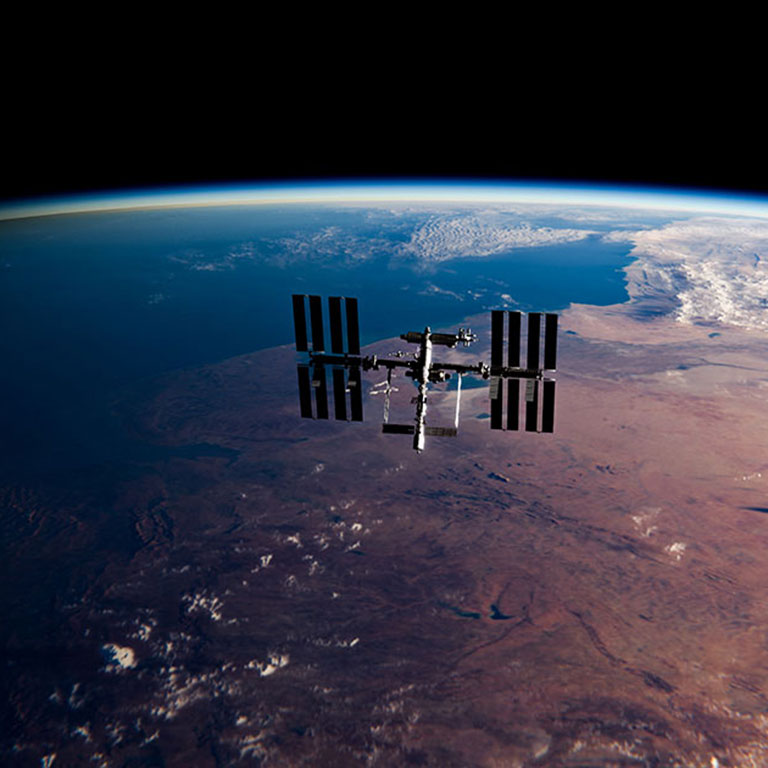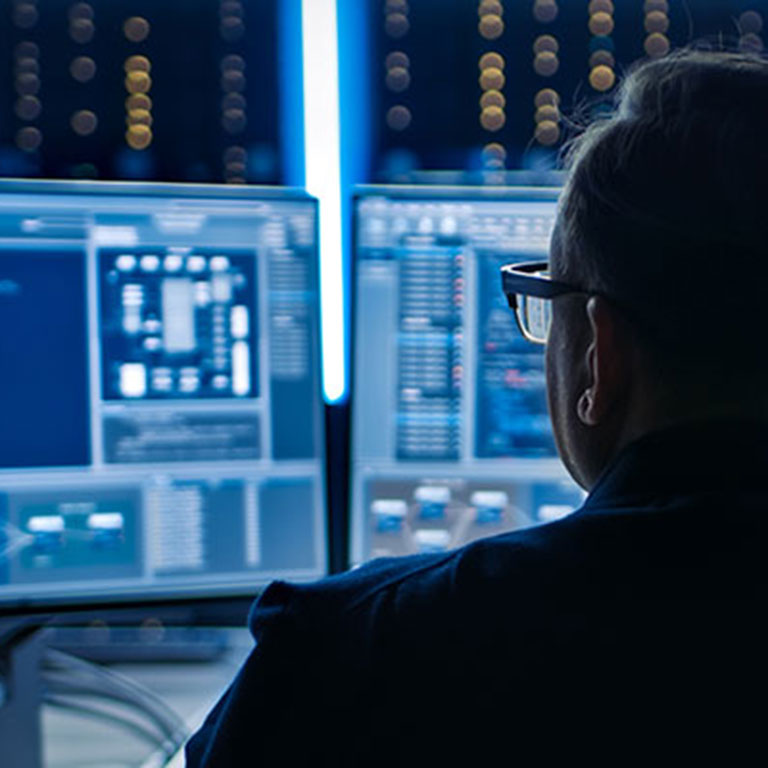Description of the video:
[Audio: Upbeat piano music comes in quickly. Video: Undergraduate student Croix Gyurek speaking off camera, video of a young woman typing on laptop in slow-motion]
The way that our technology is moved, you know, we've kind of been democratizing things,
[Video: two students seen at a desk each working on a laptop, collaborating]
making it a lot easier for people to use technology.
[Video: Croix Gyurek seen on screen speaking, lower third animates in CROIX GYUREK UNDERGRADUATE, IUPUI SCHOOL OF SCIENCE]
But that also means that it's a lot easier for bad actors and attackers to,
[Video: Croix typing close up on his laptop in slow-motion, wide shot of Croix sitting at a desk in a classroom as other students walk by]
you know, cause harm and disruption. I'm Croix. I am double majoring in mathematics and computer science.
[Video: Croix back on camera in close up]
I've just always been fascinated by
[Video: bandwidth data seen on screen monitoring the wifi router students are working on]
math and computers and wanting to put the two together.
[Video: Professor Feng Li standing at a computer desk with the IUPUI logo in front of his classroom]
So cybersecurity is an area that has lots of demand right now.
[Video: Feng Li lecturing his class in slow motion with projector screen showing data behind him]
We kind of overlook the cybersecurity for a long, long time. So we need to build
[Video: Feng Li back on camera in close up]
the cybersecurity workforce. We need to bridge the gap that we currently have.
[Video: lower third comes on screen FENG LI PROFESSOR IUPUI SCHOOL OF ENGINEERING AND TECHNOLOGY]
My name is Feng Li. I'm the chair and the professor in the computer information and graphics technology department.
[Video: Students seen from behind flipping through event directions while seated next to laptops and router]
The students working on a capture the flag event.
[Video: Wifi router seen on screen, white with two black antenna on the back sitting on a desk at the front of the classroom]
They were working on common Wi-Fi penetration testing.
[Video: close up of the wifi penetration documents that students are following, a print out with lots of screen shots and instructions]
This kind of hands on activity definitely can
[Video: another student seen working at a laptop with the command center on screen and dragging windows and entering data]
attract their interest in the cybersecurity area.
[Video: Feng Li in front of his classroom speaking in slow motion, gesturing with his right hand]
So the idea of this site is to recruit more student into graduate studies in the cybersecurity area.
[Video: Croix and other students seen sitting and working at laptops in Feng Li’s classroom]
We live in a technology age and we need to be building more technology literacy
[Video: Croix back on camera in a medium shot in front of windows]
and it needs to stop. You know, it needs to not be something that only the people up in the ivory towers, you know, know about.
[Video: two young women seen working at laptops completing the wifi password hacking]
What we hope is we can outreach to more audience
[Video: slow panning shot that shows the entire classroom with Croix and other students working at desks in teams of two]
in the cybersecurity for field.
We hope IUPUI can become a hub of cybersecurity, education and research.
[Video: Feng Li back on camera in close up sitting in a classroom]
We have the location advantage we are close to the state government. We are close to many of the industry
[Video: Feng Li seen standing in front of his students, giving instruction on how to complete the wifi password hacking, students are working quickly around him]
in great need of cybersecurity talent.
[Video: Croix seen on camera sitting next to a fellow student, he slides his chair over and they work on a laptop together]
We're kind of severely lacking in people
[Video: laptop seen on screen, a slow push in on the open system data seen on the computer]
that are willing to go hard on defenses.
[Video: Croix flipping through hacking instructions at his laptop while another student is seen in the background]
I don't know. I guess I'm just
[Video: Feng Li, Croix and another student seen together working on the project, Feng is pointing at the screen helping the students while Croix is listening]
trying to become the best
version of myself. Is the goal.
[Video: Feng Li is at front of classroom, we see him over Croix’s shoulder as he listens at his laptop, other students can be seen listening and working as well]
You know, by the time I'm done with this,
[Video: Croix is back on camera in a close up sitting by windows]
I'll have what it takes to fulfill the next stage of my life.
[Video: IU logo on screen fades in along with INDIANA UNIVERISTY RESEARCH, after a moment RESEARCH.IMPACT.IU.EDU comes on screen at the bottom. Audio: Music slows resolves and fades out]




